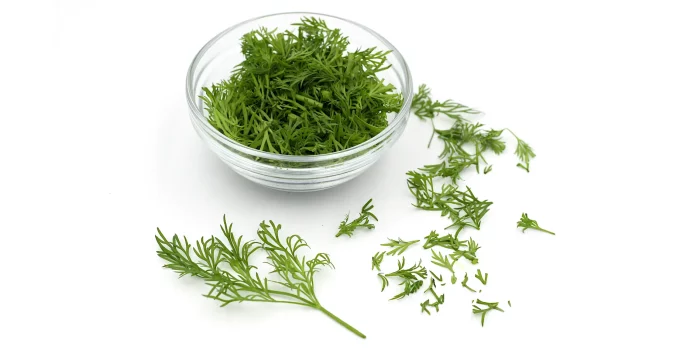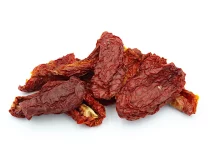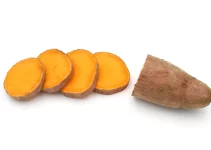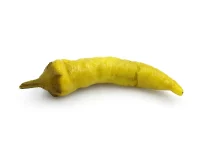Among the many herbs that we love to cook with, there are a few that are a bit harder to find than others and that’s why sometimes we might need to resort to searching for a substitute for dill.
Basil, rosemary, oregano and a few others are a lot easier to find in their fresh state in the supermarkets. Most come in their own pots, as well. You can transplant the plant into a bigger container if you want to maintain it fresh and lively for longer. It can even grow bigger.
I found that the most practical thing for me and my family is to plant our herbs indoors. If you have the space and a bit of money, I definitely recommend the experience of growing your own herbs indoors.
You can grow basil, parsley, dill, rosemary, mint, oregano, chives, and so much more. Plus, herbs are not very demanding plants. With a bit of research, in a few minutes, you’ll be able to gather all the necessary information for growing each one at home.
Table of Contents
Substitute for Dill: Top 7 Favorite Picks
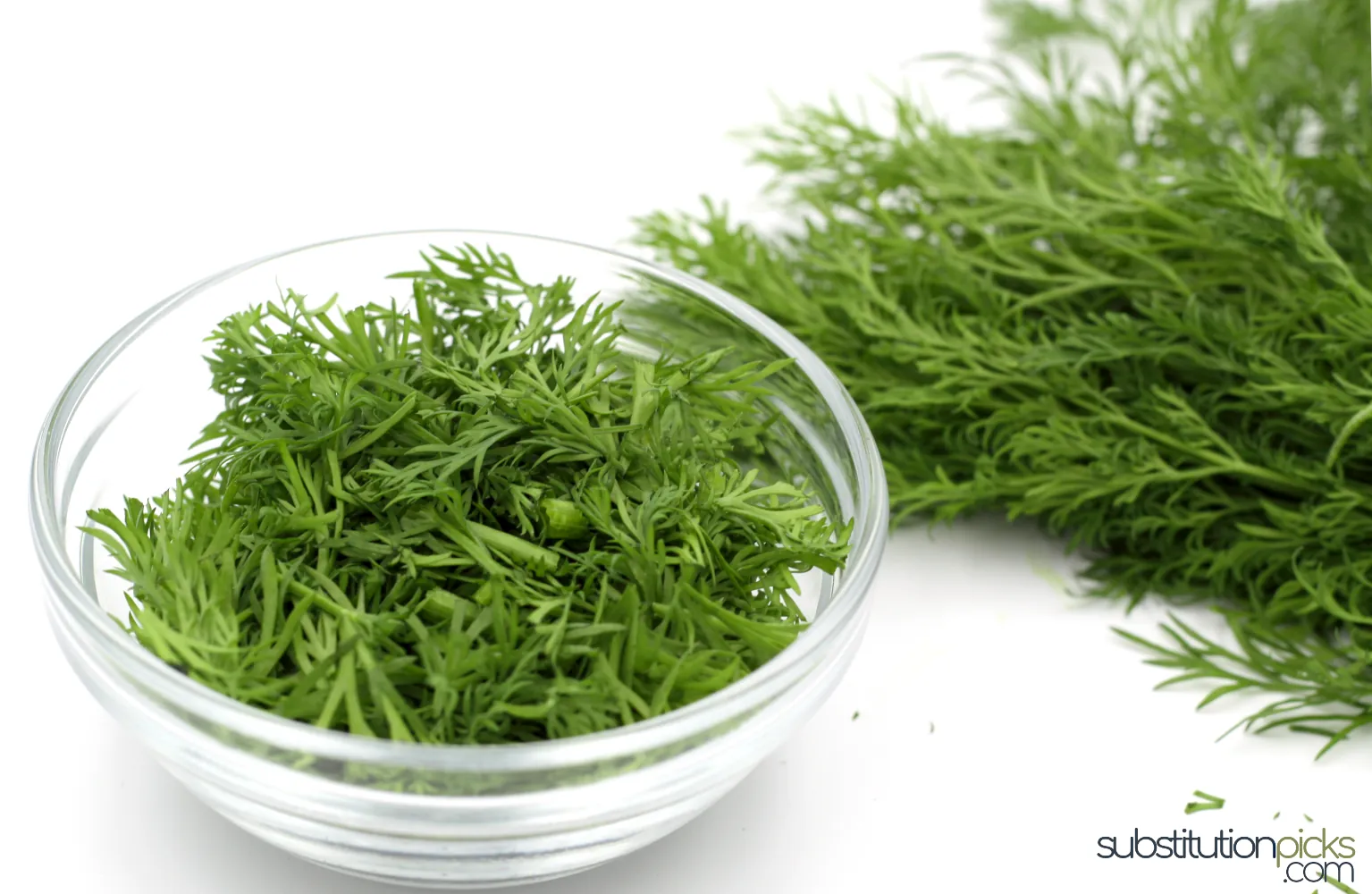
My first recommendation as a substitute for dill would be to buy dry dill weed, if you can’t find it fresh. However, we’ll also talk about what other herbs can work as a replacement.
1. Dry Dill Weed
When we’re thinking of substitutes for fresh herbs, the first thing that comes to our minds is whether their dry counterparts are just as flavorful.
In some cases, like it is with basil or parsley, I only like using fresh leaves because the dry options have little flavor.
In other cases, the dry herb can be quite flavorful and it can infuse the food with the same beautiful taste.
It’s called dill weed because it is the dried leaves of the dill plant. Dill weed is sometimes referred to as leaf dill.
Dry dill can be used in the same way that you would use fresh dill, they’re absolutely interchangeable.
You can use it in soups, salads, dressings, stews, and whatever recipe you want to make.
It also works for making pickles. I never make my pickles without this herb, whether it’s fresh or dry.
The substitution rate of dry dill weed for fresh dill is: 1 teaspoon dried dill = 1 tablespoon fresh dill.
Another substitution is this: 3- to 5-inch sprig of fresh dill = 1/4 teaspoon of dried dill weed.
2. Dill seeds
If you’re making pickles and you don’t have either fresh or dry dill, you can use dill seeds for pickling.
The same seeds can also be used in recipes, just like we’re using coriander seeds.
If the recipe calls for 1 dill umbel (dill head) and you don’t have fresh or dry dill weed, make this substitution: 1 teaspoon of dill seed = 1 fresh dill umbel.
That is also equivalent to: 1 tablespoon dill seed = 3 heads dill.
If the recipe doesn’t specify using X dill heads but it specifies teaspoons of chopped fresh dill, you can make this substitution: 1/2 ounce dill seed = 1/2 cup fresh dill.
1/2 ounce is the equivalent of 3 teaspoons (1 tablespoon).
1/2 cup is the equivalent of 24 teaspoons (8 tablespoons).
Check out my comparison for dill seed vs dill weed to see how these two products from the dill plant differ in taste and how they’re used.
3. Tarragon
If you want to use another herb that can come close to dill, then your best bet would be to use tarragon.
The question is how easy is it to find tarragon where you live? You might have better luck with buying dry tarragon.
However, you should know that tarragon tastes quite different. It has a licorice flavor on the finish.
On the other hand, dill has a fresh, citrus-like taste, with a bit of a grassy undertone. It also has a taste reminiscent of anise and parsley.
Both herbs work as substitutes for each other in a 1:1 substitution but it’s not my favorite substitute.
4. Parsley
Since we mentioned that dill has a citrus-like taste with a grassy undertone, it’s only natural that the description would remind us of another herb.
The two herbs don’t have a similar taste but I think they work as substitutes.
Parsley can be the best substitute for dill and the one that’s easiest to find in its fresh state.
It has a peppery taste with a touch of earthiness that’s suitable for so many recipes from around the world.
Plus, I generally love parsley more than dill.
One recipe where parsley doesn’t work as a substitute is when we’re using dill for pickles.
If a recipe calls for both dill and parsley, then you can’t skip on using dill and just use parsley and skip the dill if you don’t have any.
Does parsley go with fennel?
They do pretty well together in some recipes. Fennel has a bittersweet taste and it can be balanced by parsley’s fresh, zesty flavor. It’s a nice way to add a green and peppery kick to a lot of dishes.
If you love parsley and fennel together, you could also make a parsley and fennel salad.
5. Preserve fresh dill
Another solution is to buy a bunch of fresh dill when you can and store it for longer.
You can spread the leaves thinly on paper, microwave them to retain their color and fragrance, and then store them in an airtight container in a cool, dry place.
Another option is to chop the leaves, put them into ice-cube trays, top with water and freeze them.
6. Can you use fennel fronds as a substitute for dill?
The simple answer is that, generally, no.
The only exception where I would see myself using fennel fronds instead of dill is when cooking salmon. Both pair well with salmon and fish in general.
Both dill and fennel belong to the Apiaceae family, where we’ll also find other herbs like parsley, anise, coriander/cilantro, cumin, caraway.
If you’ve ever seen a fennel plant with its green stems and leaves, which are also called fennel fronds, then you might have thought that those leaves look like dill. That was the first thing I registered when I discovered what fennel is.
Well, the fact that the leaves have a similar appearance is nice to know.
However, the important question is: do these two herbs have a similar taste so that fennel can act like a substitute for dill?
Unfortunately, the answer is that they have quite different flavors.
The thing with fennel is that it has a distinctive licorice flavor, which is why I recommended fennel seeds as a substitute for star anise.
As a substitute for dill, the similarly looking fennel leaves are not the best option because, when it comes to taste, these two have pretty much nothing in common.
7. Thyme
Dill and thyme don’t have much in common when it comes to taste. However, thyme can be used as a substitute for dill if it’s paired with a variety of meats.
Thyme also pairs very well with a variety of vegetables: beans, cabbage, carrots, eggplant, onions, potatoes, tomatoes, garlic.
In combination with other herbs, thyme pairs well with basil, rosemary, parsley, oregano.
Popular recipes with dill
We already know that dill is highly popular for making pickles. Dry dill weed is a perfect substitute for dill in pickles. Dill seeds also work if you can’t find it either fresh or dry.
Let’s see what other recipes we might need to substitute dill in.
Tartar sauce
The classic recipe for tartar sauce involves ingredients like mayonnaise, pickles, capers, lemon juice, and herbs.
So, which herbs are asked for? Chopped parsley and dill, usually 1 tablespoon of each.
One very simple solution is to add just the 1 tablespoon of parsley.
Another solution is to ground some dill seeds so that they will be mixed perfect into tartar sauce. Now will be the perfect time to use your mortar and pestle.
To substitute 1 tablespoon fresh chopped dill, I would ground less than half of a teaspoon of dill seeds. That should be enough.
Lemon dill salmon
There three herbs that would works as a substitute for dill in a salmon dish. Or, for that matter, any fish dish.
The first one is fennel, which works nicely with fish. But not a lot of people love fennel and not a whole lot can have access to fennel fronds whenever they feel like it.
A second one if tarragon. Once again, it’s a pretty strong flavor and not a lot of people might have access to fresh tarragon. Around the world, I would say that fresh tarragon is a lot harder to find than fresh dill.
My third substitute is thyme. It goes well with dish and lemon and garlic and whatever other ingredients a fish recipe can call for. It’s also delicious and has a more mild and sweet flavor. On the other hand, I don’t know how easy it is to find where you live.
Dill pickle dip
Since it’s called a dill pickle dip, you know how important fresh dill is as an ingredient. Once again, I would recommend grounding some dry dill seeds if you don’t have the fresh variety.
Cucumber dill salad with lemon vinaigrette
For salads, you can use parsley. It will pair well with pretty much all ingredients.
In some combinations, basil will also work nicely as a substitute for dill in salads.
For a more interesting kick, you can even add a bit of fennel. Or maybe a bit of chopped tarragon.
We get a lot more liberty when it comes to salads. We can switch ingredients to suit our taste.
Dill potato salad
Thyme pairs very well with potatoes so it can be used as a substitute.
Parsley can be used instead, too.
Or you can ground dill seeds, like I mentioned doing for tartar sauce.
Dill yogurt sauce
Once again, my first two recommendations as substitutes are parsley and thyme. Parsley would be a favorite for a yogurt sauce.
Mint also works beautifully in yogurt sauces. Just think of tzatziki and you’ll understand what I’m talking about.
We saw how we can use these main ingredients are a substitute for dill, depending on what we’re cooking, but if you really love your herbs, I recommend growing a few in some pots or containers because it’s quite easy and rewarding.

